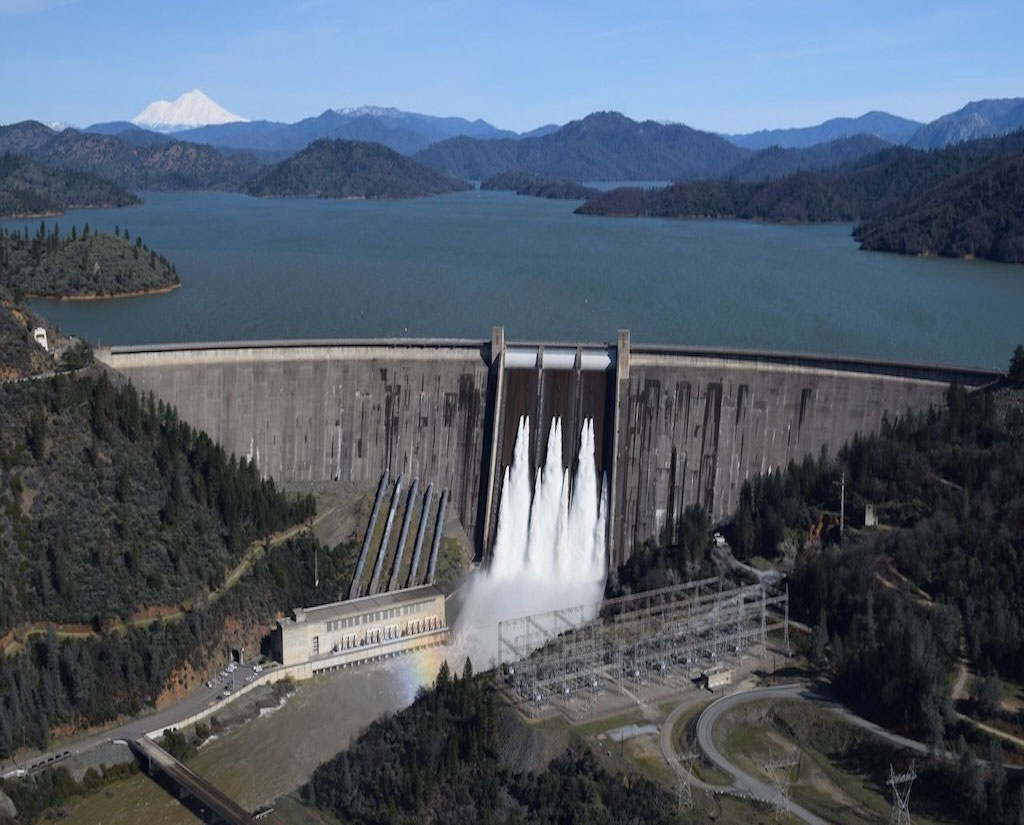
Engineering Precision in an Imperfect World
When engineers design underwater sealing solutions for critical infrastructure, they face a fundamental paradox: creating precision fits for structures that were never built to perfect specifications. The concrete conduits and steel-lined openings that channel millions of gallons through America's dam systems exist in the real world of construction tolerances, decades of thermal cycling, and the subtle but relentless forces of water pressure and time.
The challenge is to create a seal that can adapt to the geometric realities of infrastructure that may have been poured in concrete fifty-plus years ago, where "round" might vary by several inches across its diameter, and where the transition from circular intake to rectangular gate structure—or a rectangular gate intake transitioning to a circular conduit pipe—follows engineering logic that prioritizes flow dynamics over sealing convenience.
The Geometry Challenge: When Perfect Meets Practical
The diversity of conduit geometries across America's water infrastructure tells the story of decades of engineering evolution. Early dam construction favored massive circular tunnels carved through rock and lined with concrete – structures where a 25-foot diameter tunnel might vary by a few inches from true circular form. Later installations incorporated steel-lined conduits that prioritized structural efficiency and construction economy over geometric perfection.
The most complex scenarios arise at transition zones where rectangular gate structures transform into circular conduits. These areas represent critical control points in the water management system, where flow must be precisely regulated while maintaining the ability to completely shut off flow during emergency conditions. The geometry at these locations follows hydraulic engineering principles that create smooth flow transitions, resulting in complex curved surfaces that change from circular to rectangular over distances measured in feet rather than hundreds of feet.
Consider the engineering challenge this presents for emergency sealing technology. A solution must accommodate not just the nominal geometry, but the reality that concrete surfaces may include construction joints and regions where decades of water flow have created subtle erosion patterns. Steel surfaces bring their own challenges: welded joints that create raised ridges, areas where protective coatings have worn thin and led to corrosion pitting, and potential dimensional changes that occur when massive steel structures experience daily temperature variations.
Compliant Design Philosophy: Engineering Forgiveness
The most successful sealing approaches embrace a design philosophy that builds adaptability into every component. Rather than demanding perfection from the infrastructure, these solutions incorporate compliance at multiple levels, from materials to mechanical systems to configuration, based on the geometry they encounter.
Compliant edge design represents one of the most critical innovations in this field. Traditional sealing approaches rely on precise dimensional matching between the seal and the surface. Compliant systems incorporate materials and geometries that can adapt to variations while maintaining sealing effectiveness. This might involve elastomeric components that can deform under controlled pressure, or mechanical systems that can adjust their profile to match encountered surfaces.
The material science behind compliant sealing operates at the intersection of multiple engineering disciplines. The approach, such as elastomers, needs to apply an incremental sealing of the conduit—a slow stopping of the water flow—in high and dynamic pressure and flow environments. They must maintain their sealing properties across temperature ranges from near-freezing deep water to potential elevated temperatures during installation. They must resist degradation from extended exposure to water while maintaining sufficient flexibility to accommodate geometric variations. The supporting structures must provide enough rigidity to maintain overall system integrity while allowing the controlled flexibility that enables surface conformance.
Segmented frame approaches offer another pathway to geometric adaptability. Rather than attempting to create a single rigid structure that must match complex geometries perfectly, segmented systems break the sealing challenge into smaller, more manageable components. Each segment can adapt to local geometry variations while contributing to overall system performance. The engineering of segmented systems requires careful attention to the interfaces between segments. These connection points must maintain sealing integrity while allowing the individual flexibility that makes the segmented approach effective. The design challenge involves creating connections that can accommodate the relative motion between segments while limiting water infiltration at the joints.
Accommodating the Inevitable
Infrastructure experiences dimensional changes that occur over multiple time scales, from the daily thermal cycling that affects steel structures to the long-term creep and settling that affects concrete installations. Effective sealing systems must accommodate these changes without compromising performance or requiring frequent maintenance interventions.
Expansion joint design for underwater sealing applications incorporates lessons learned from bridge construction, building architecture, and pipeline engineering, but must adapt these principles to the unique constraints of submerged deployment and operation. The expansion elements must function reliably in environments where direct human inspection and maintenance are impossible, and where failure could have catastrophic consequences for water supply or flood control systems.
Mastering Transitions: The Round-to-Rectangle Challenge
The most complex sealing scenarios occur at geometric transition zones, particularly where circular conduits transform into rectangular gate structures. These locations represent critical control points where the engineering priorities of hydraulic performance, structural integrity, and sealing effectiveness must be balanced within geometric constraints that follow the fluid dynamics requirements rather than sealing convenience. The geometry at these transition zones follows mathematical principles that ensure smooth flow patterns and minimize energy losses as water moves from the rectangular opening that accommodates gate structures to the circular cross-section of the main conduit. The resulting surfaces create complex three-dimensional curves that change continuously over the transition distance.
Creating effective seals for these transition geometries requires approaches that can adapt to continuously varying surface orientations and curvatures. The sealing system must accommodate not just the dimensional variations typical of construction tolerances, but the fundamental geometric challenge of creating effective sealing contact across surfaces that curve in multiple dimensions simultaneously.
Integration with Existing Infrastructure
The retrofit nature of most underwater sealing applications adds another layer of complexity to the geometric accommodation challenge. The sealing system must integrate with existing infrastructure that was designed and built with different priorities and constraints than those facing current sealing technology developers. Existing anchor points, structural details, and access limitations all influence the geometric requirements for sealing systems. The solution must work within these constraints while achieving sealing performance that meets current safety and reliability standards. This often requires creative approaches that utilize existing structural elements in ways that weren't originally envisioned, while ensuring that the additional loads and forces introduced by the sealing system don't compromise the structural integrity of the existing infrastructure.








